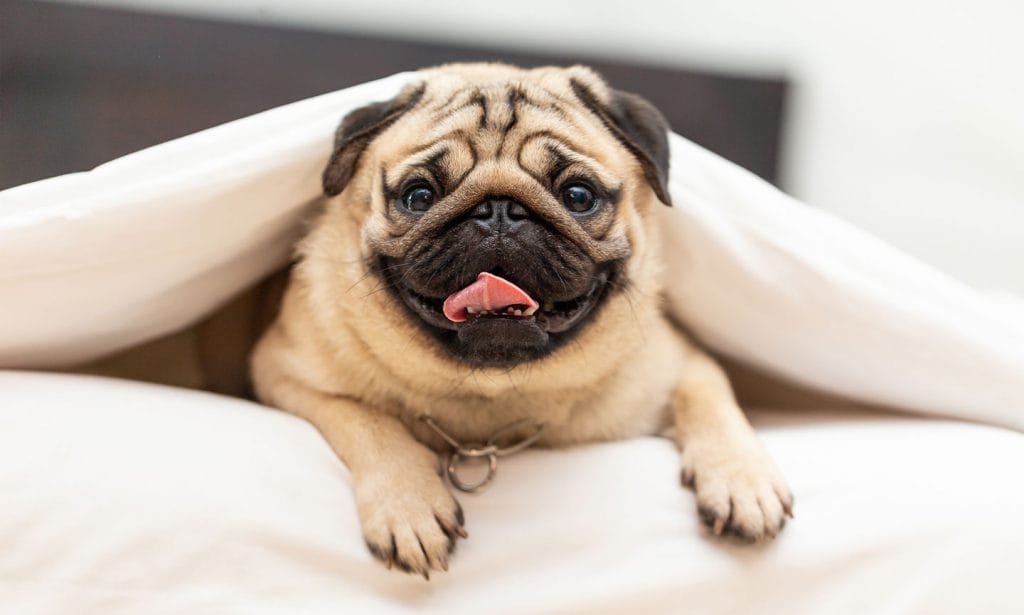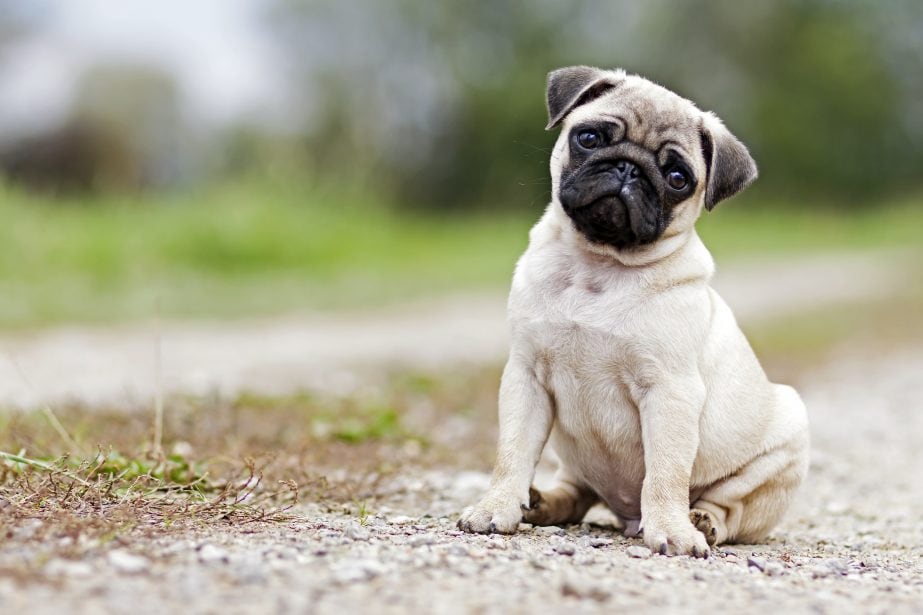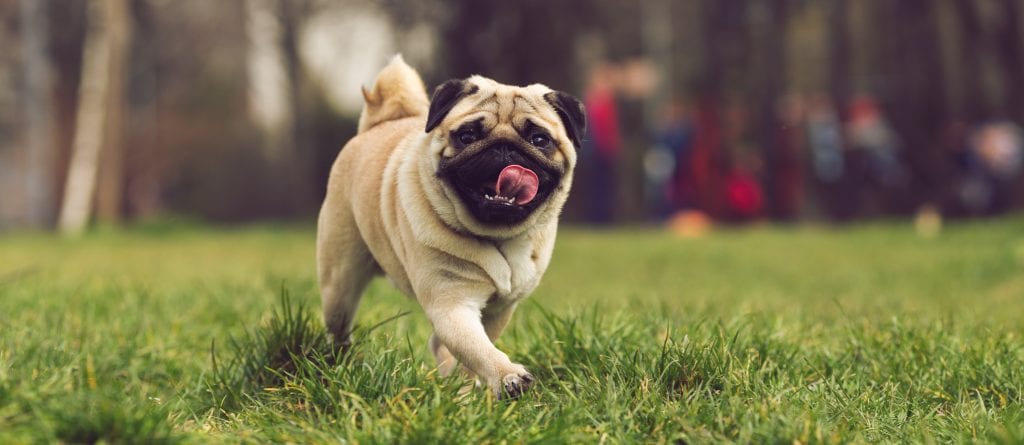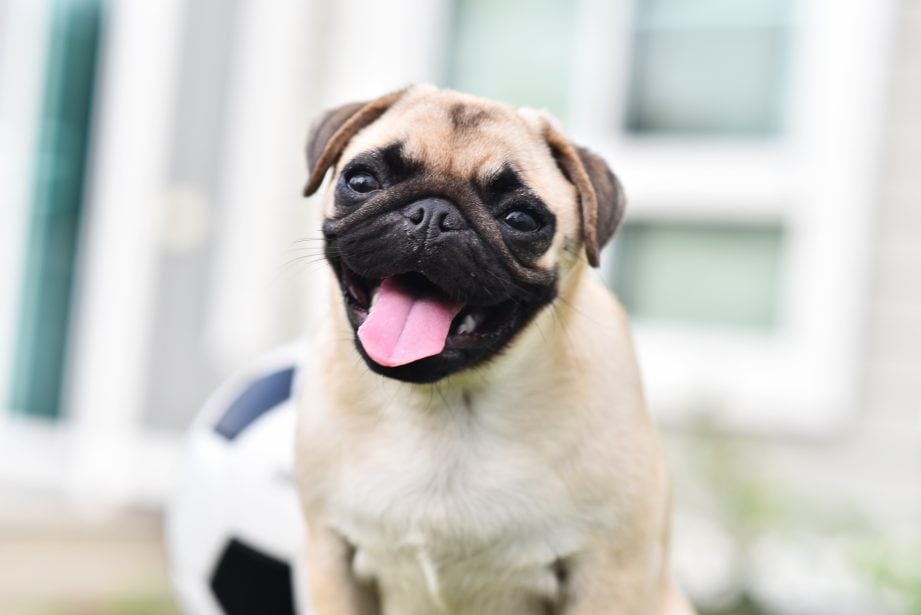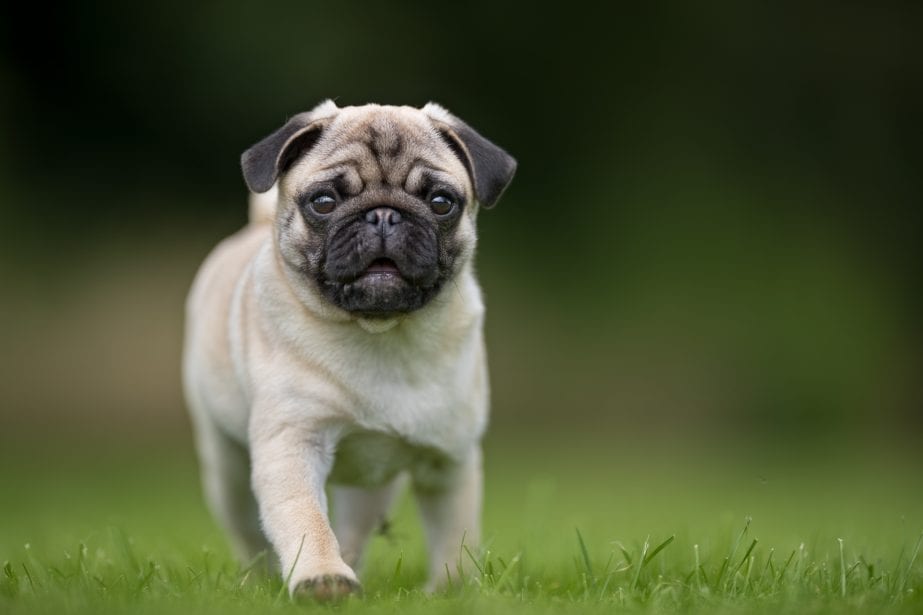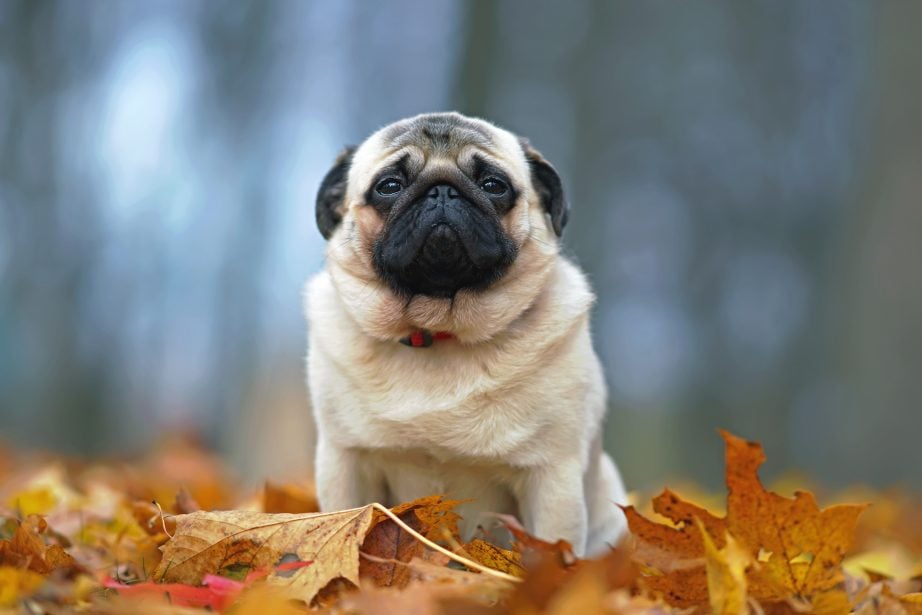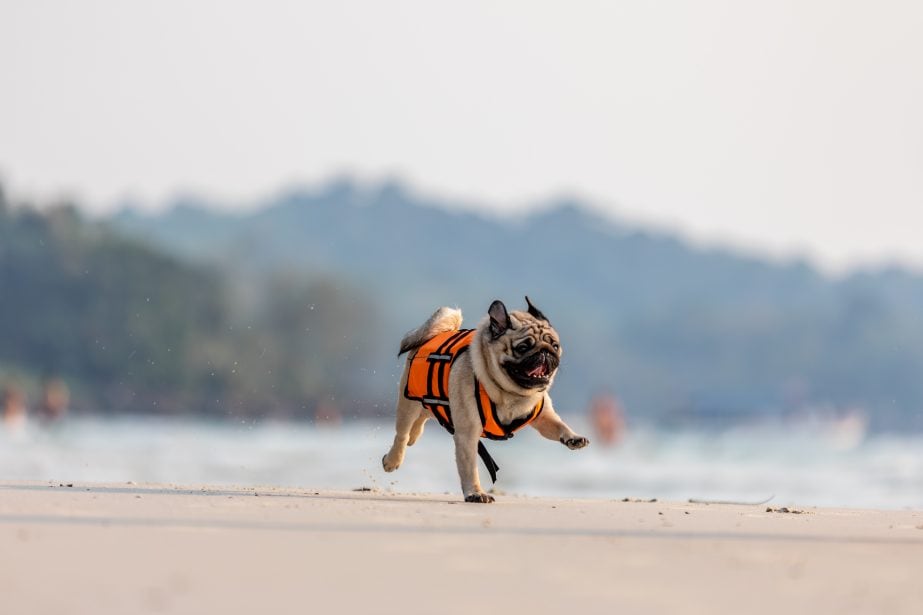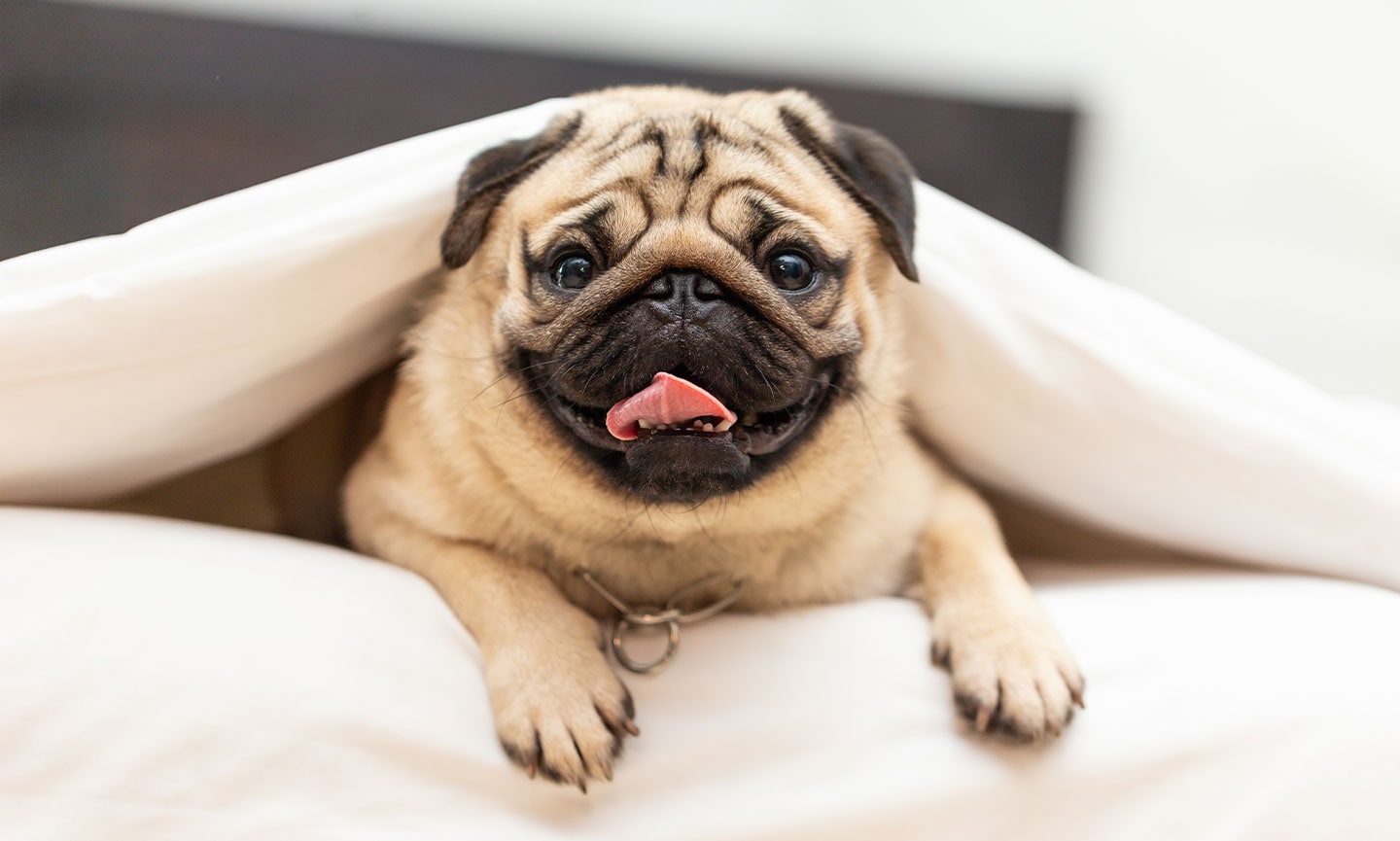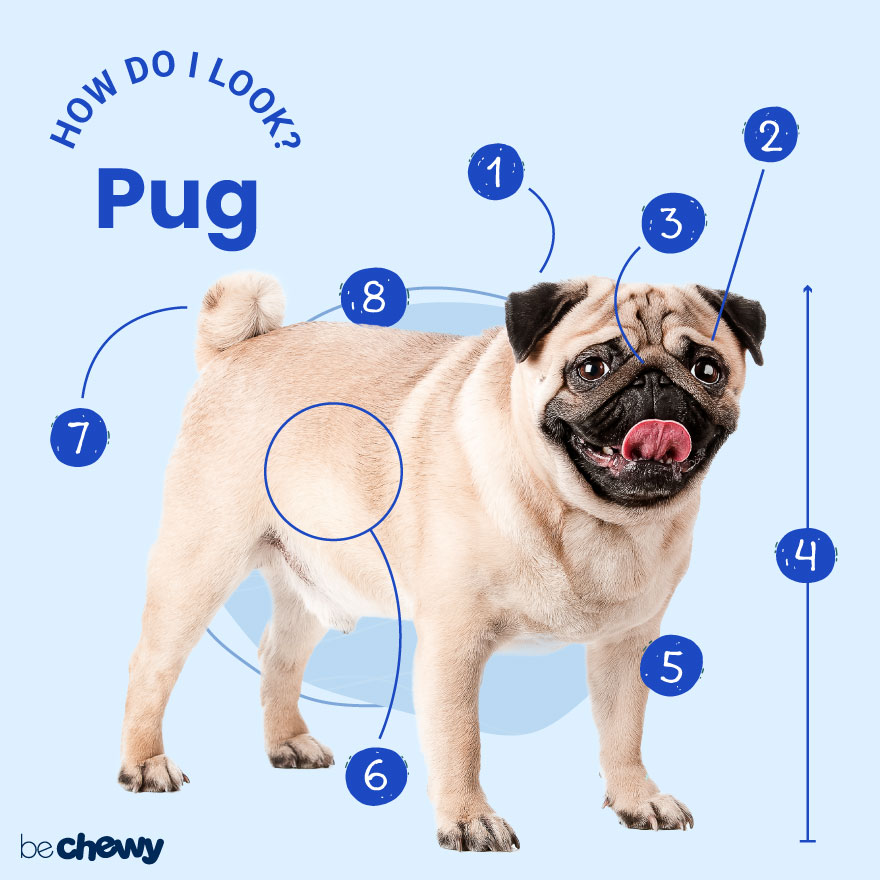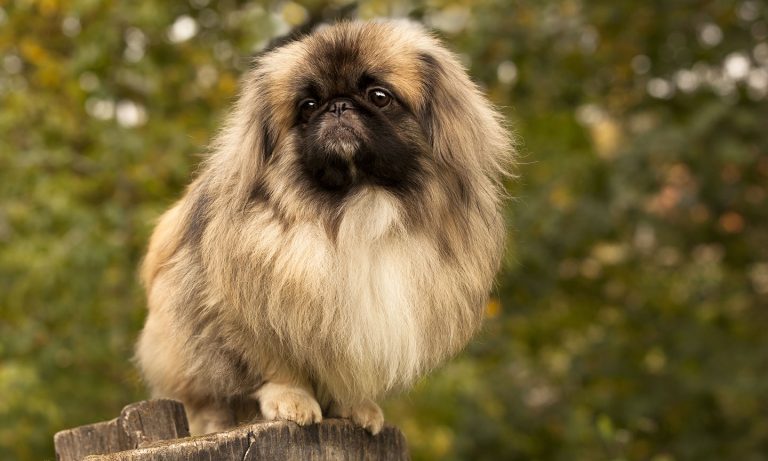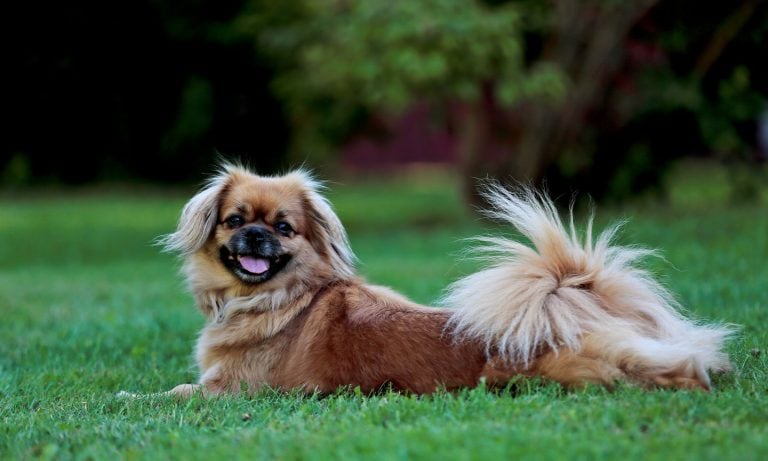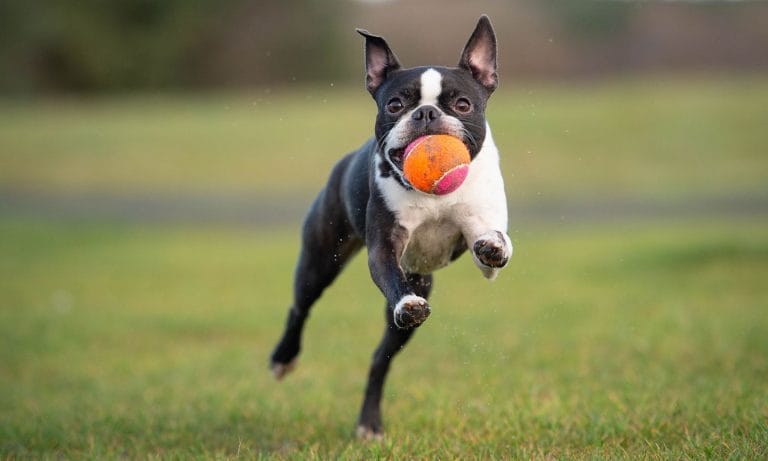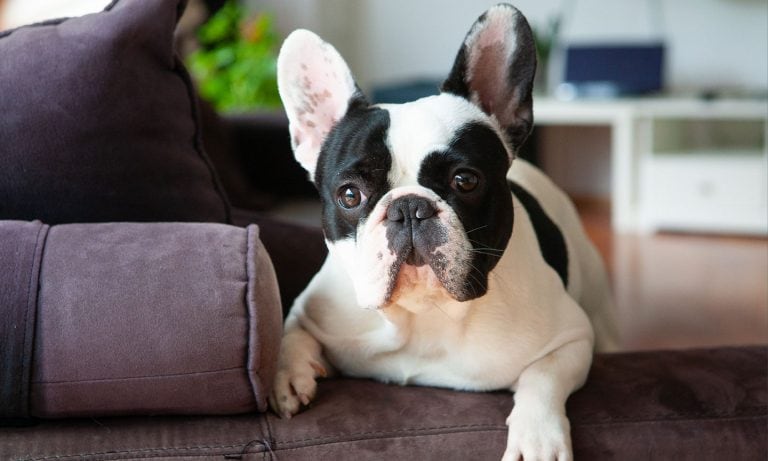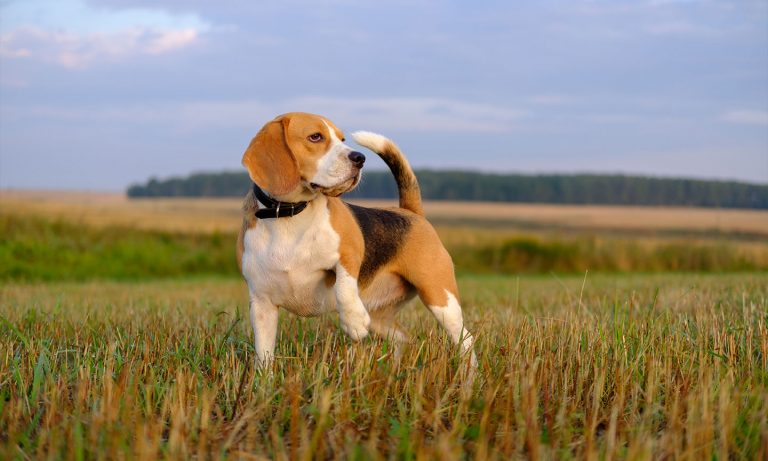Everybody loves the idea of hobnobbing with royalty, but if your invite to Buckingham Palace got lost in the mail, the next best option is to invite a Pug into your life. Pugs have spent thousands of years as beloved companions to royalty from China to Holland and beyond, yet somehow these regal dogs have maintained their sweet, humble spirit as well as their happy-go-lucky demeanor. Best of all, they’re equally content whether you live on a cul-de-sac or reign in a castle. You’ll definitely feel like royalty with a Pug in your life—the tiara is optional.
Breed Snapshot
Temperament:
FriendlyLaid BackLovingCoat Color:
BlackFawn
Best For
The Pug breed is best for someone looking for a low-energy, indoor dog.
Pug Temperament
Simply put, Pugs are incredibly friendly dogs. They thrive on attention and can get pretty worked up and excited if fun things are happening. These are amiable little dogs who want to participate in your activities, too. Pugs are typically not aggressive; they prefer friends over foes, and they’re not prone to bite (their jaw shape minimizes the effectiveness of their bite).
Pugs with kids and babies are often a great combination since Pugs are fun and enjoy playtime. However, the Pug’s eyes are at risk for injury (since they slightly stick out), so children need to learn early on that their pet’s face is vulnerable, and they must take care while playing with the dog.
A Pug’s personality is playful and charming but in a somewhat regal and controlled manner. They’re enjoyable dogs to be around, and hopefully, you don’t mind the occasional snore!
Finally, when it comes to a career, Pugs may have the best job in the world: being a companion to their loving family. They are average barkers (not too quiet, not too much) and make fairly good watchdogs.
How to Care for a Pug
Pugs are easy dogs to care for. They’re smart and quick to learn, so training is enjoyable for everyone. Grooming is simple other than a couple of Pug-specific chores, and the breed doesn’t have high exercise requirements. The biggest challenge to Pug care is probably their health needs, which are high.
Pug Health
Toy dog breeds tend to have longer lifespans than large dog breeds, and the Pug is no exception. Pug life expectancy is about 13 to 15 years. However, there are a few health issues you should be aware of, so you can help your pet stay healthy throughout their life.
- Eye Issues: Since Pugs have such prominent eyes, they are more prone to eye issues. Examine your Pug’s eyes for signs of discharge, squinting or cloudiness and seek veterinary care if you observe any of these. Dry eye is another common eye problem that Pugs develop when their eyes don’t produce enough tears. Treatment usually consists of medicated eye drops.
- Hip Dysplasia: Hip dysplasia occurs when the hip joint isn’t formed properly and doesn’t fit right. Some breeders are reducing the incidence of hip dysplasia by testing parents to ensure the condition isn’t passed to future generations. Weight reduction, physical therapy and surgery are options for treatment.
- Patellar Luxation: This is the condition where the knee slides out of the joint. In milder cases, pain medication and weight management are treatment options. Surgery is often needed in more severe cases.
- Pug Dog Encephalitis: This is an inflammatory brain disease and is fatal. Within a matter of weeks, a dog will experience seizures, circling, blindness, then coma and death. At this time, there is no known treatment for the disease, nor are experts sure how they get it. But there is a test to assess a dog’s risk for getting the disease; this helps responsible breeders choose the dogs they mate and helps limit the risk for future generations developing the disease.
- Skin Issues: Keeping your Pug clean helps minimize skin issues. In particular, the skin folds require special attention to avoid irritation and infections. Pet parents can clean the Pug’s facial wrinkles and around the genitals with mild wipes to help prevent odors and discharge.
- Ear Infections: Those floppy ears are cute, but they may harbor infections. Check their ears every day and gently wipe away any debris. Signs of infection include redness, swelling or a bad odor. Your vet can prescribe medicated ear solutions to get rid of an infection.
- Allergies: Pugs can be affected by skin allergies. These can be caused by something in the food they eat or their environment (pollen, mold, etc.) Thankfully, your vet can treat allergies with either dietary changes or medications, depending on the cause.
Pug History
The history of the Pug dates back thousands of years and spans multiple continents. But their (not so) humble origins began as the beloved companions of Chinese emperors, and they were highly prized and valued for centuries. Some Pugs even had their own guards!
By around the 1500s, Pugs began to travel abroad, and they arrived in Europe, where they became quite popular with royalty in Holland. In France, Napoleon’s wife Josephine had a Pug. Over in England, Queen Victoria was said to be especially fond of the breed; she shared her home with as many as 38 Pugs.
Pugs have often been associated with the Latin phrase, Multum in parvo, which translates to “much in a little.” No other phrase sums up Pugs quite as effectively. They may be small dogs, but they pack a lot of personality into their small size!
The American Kennel Club recognized the breed in 1885, but the popularity of the Pug breed in America declined somewhat around the turn of the 20th century. Later, interest increased again, and The Pug Dog Club of America was established in 1931. Today, the Pug enjoys steady popularity, currently ranking 28th of the most popular dog breeds in the US.
So, where’s the best place to find a Pug puppy? You can find a list of reputable breeders on the American Kennel Club’s website. What’s the average Pug price? Depending on the breeder, expect to spend anywhere from $1,000 to $2,500 for a pup. But for that, you usually get a dog who’s been screened for health and temperament issues, and they might even come with pedigree papers. You can also reach out to Pug rescue organizations to adopt a Pug or keep an eye out for the breed at your local animal shelter.
MORE: 5 Things You Should Know Before Getting a Pug
FAQs
Are Pugs hypoallergenic?
Unfortunately no, Pugs aren’t hypoallergenic. They shed (sometimes a lot!) and pet parents with allergies may react to the Pug’s hair and dander.
Are Pugs smart?
Pugs may not be the smartest in the dog kingdom (like overachiever Border Collies), but they are very intelligent and trainable. They tend to be highly motivated by food, which is always a help when training. They are also motivated by an innate desire to please their loved ones.
Can Pugs swim?
Technically, Pugs can swim—but should they? Like other brachycephalic breeds, Pugs aren’t physically well-suited for swimming. While they do have a natural instinct to swim while in water, their physical characteristics typically prevent them from being strong swimmers.
Are Pugs aggressive?
No, Pugs aren’t aggressive. Most Pugs have a pleasant, happy-go-lucky personality. Of course, any dog can display unwanted behaviors that may need to be addressed, but a reputable trainer can help you work through any issues.
What are the most common Pug mixes?
- Pug-Beagle mix (Puggle)
- Pug-Chihuahua mix (Chug)
- Pug-Siberian Husky mix (Pugsky or Hug)
- Pug-Welsh Corgi mix (Porgi or Corgi Pug)
- Pug-Poodle mix (Pugapoo)
- Pug-French Bulldog mix (Frug)
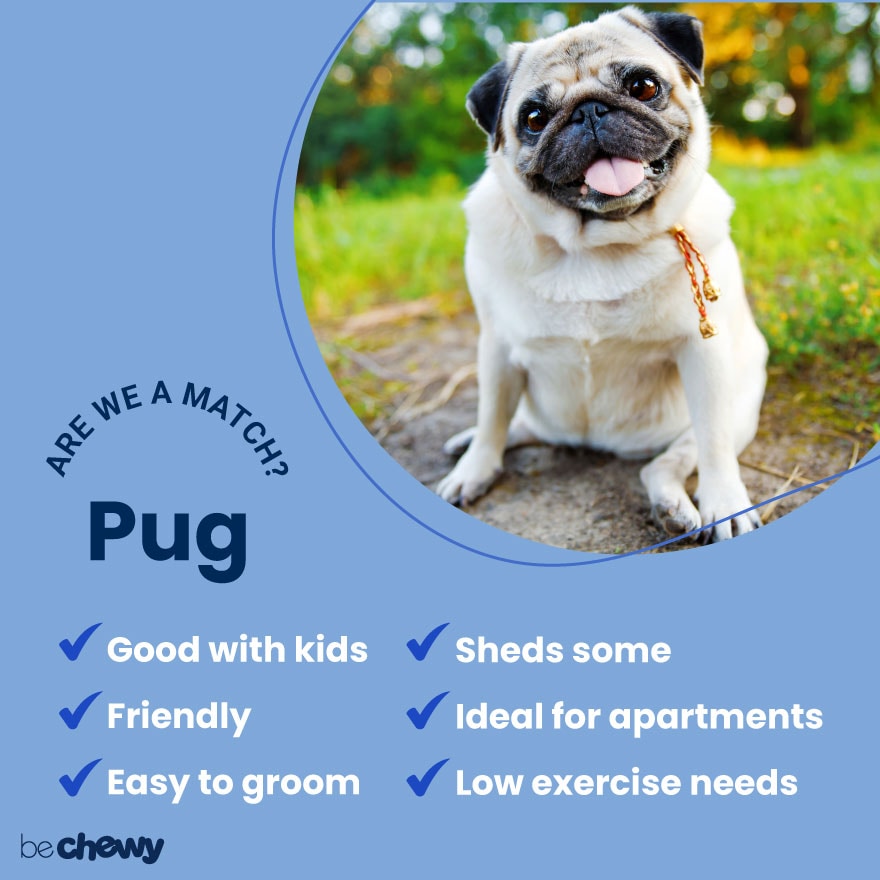
Top Takeaways
If you love the idea of a small canine companion with a regal air and some goofiness and fun-loving qualities, then a Pug as a pet might be just the fit for you. The Pug’s “family-first” priority is one of their best traits, and they’ll make a loving companion for years to come.
Expert input provided by veterinarian Dr. Kathleen L. Smiler, DVM, DACLAM, and certified dog trainer Alisa Sibley, CPDT-KA, KPA-CTP, of Four Paw Sports Center.

Search for Adoptable Pugs Near You
Female Names
- Luna
- Bella
- Lola
- Lucy
- Daisy
- Stella
- Ruby
- Rosie
- Olive
- Penny
Male Names
- Milo
- Max
- Winston
- Frank
- Otis
- Gus
- Frankie
- Oliver
- Rocky
- Louie
Share:
